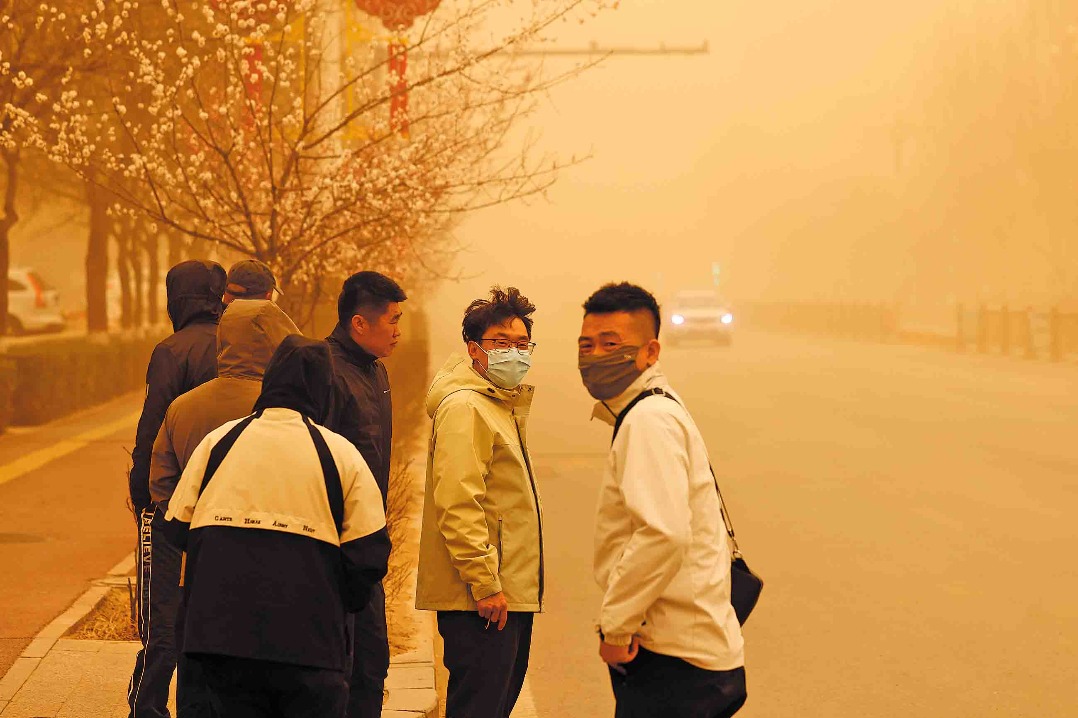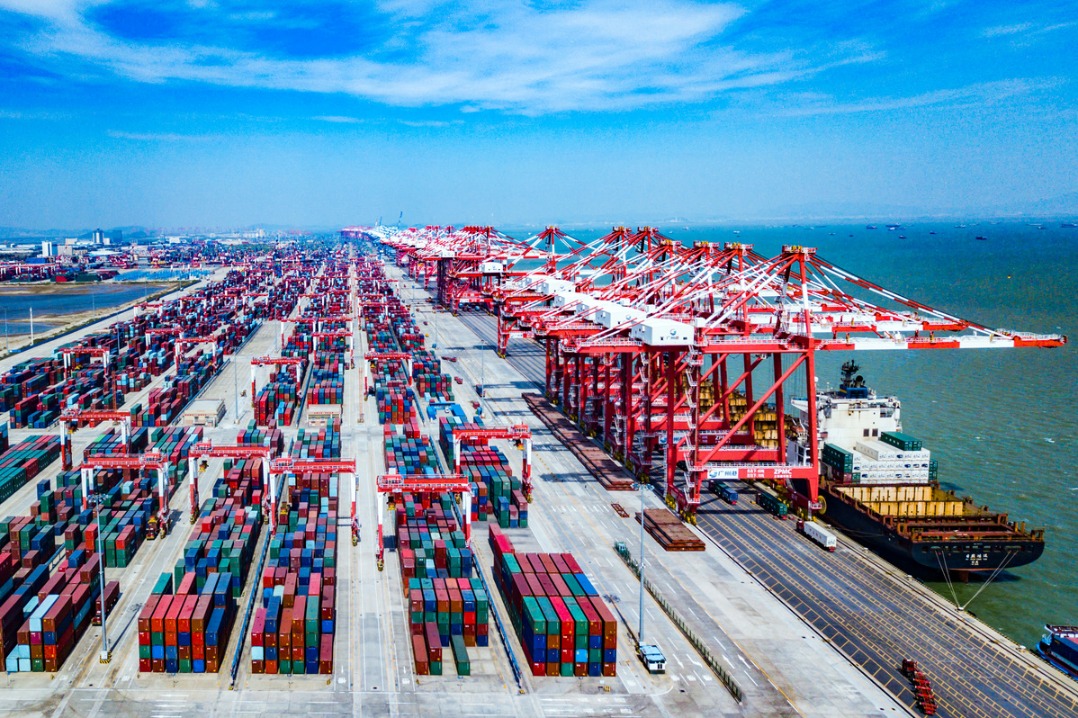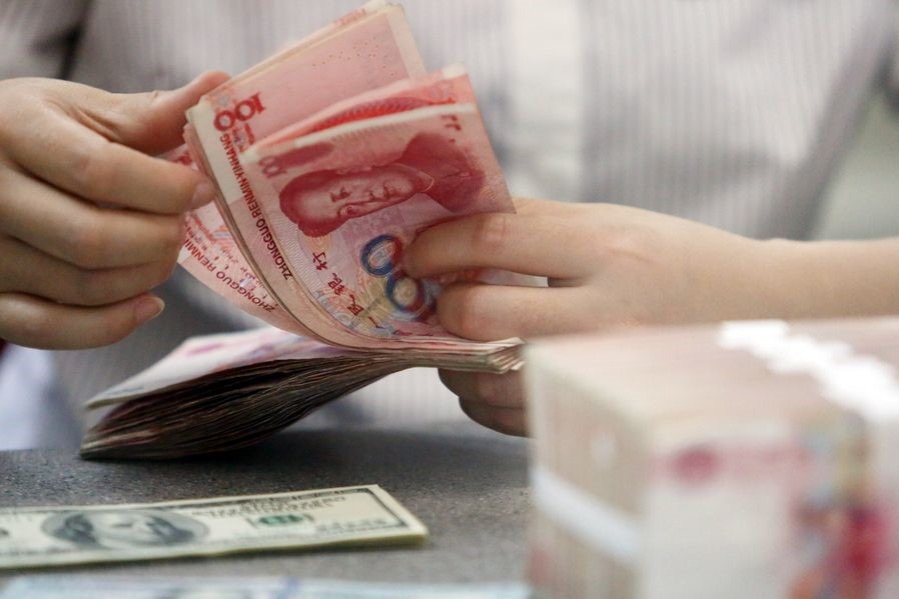Economy resilient despite outbreaks


In the West, international media have portrayed Omicron infections in China as a harbinger of a mass outflow of foreign multinationals from the country. Yet the investment data reflect the opposite.
Since early March, the outbreak of the Omicron variant of the novel coronavirus has spread from Shanghai to other parts of China, including Beijing, and Guangdong and Hunan provinces.
When China largely contained the COVID-19 outbreak in early 2020, the number of confirmed cases was about 3 million worldwide. After two years of the pandemic, the global figure is almost 515 million. In the United States alone, the number of confirmed cases is more than 83 million, although the real figure could be much higher. According to the Centers for Disease Control and Prevention, nearly 60 percent of Americans have been infected by the virus.
The failure of the United States and European countries to contain the pandemic, coupled with inadequate international cooperation and rich countries' vaccine hoarding, have given rise to waves of new variants. The common denominator of these crises is the end of the lockdowns, opening up of the economies and increasing international travel. China is no exception, but it also has a track record of fast response and fast economic rebound.
In view of the total number of cases, adjusted to the size of population, the list is currently topped by small and open trading economies, such as Denmark (fifth) and the Netherlands (ninth), and major economies, including France (14th), the United Kingdom (38th) and the US(56th). While the numbers are lower for Japan (128th) and developing countries such as India (150th), China (223rd) is at the far end of the list. It has 151 cases per 1 million people, significantly lower than 248,000 cases per 1 million in the US.
It is hard to avoid the impression that double standard is now a norm in news coverage in the West.
The counter-argument might be that China occupies such a vital position in international value networks that severe disruptions in Shanghai, Beijing and Guangdong will have global repercussions. That is, of course, true, but it is also true about foreign multinationals headquartered in the US, European countries and Japan.
The pressure on global supply chains remains high relative to historical levels. Obviously, rolling lockdowns in China's economic hubs pose new challenges, including delayed recovery in the auto sector and increasing headwinds in the electronics sector. The slowdown is already discernible in the sharp fall in the purchasing managers' index for March, coupled with weak import growth.
In China, the impact of global pressure is high, due to the country's key role in global supply and distribution. But other economies are likely to encounter stronger headwinds over time.
The US Federal Reserve approved a half-percentage-point interest rate increase on Wednesday. Since the Bank of England is likely to follow in the Fed's footprints, pressure will increase on the European Central Bank to launch its rate plan.
What will make the situation even more challenging are the looming energy and agricultural crises, compounded by the Russia-Ukraine conflict, the misguided use of Western sanctions against Russia, and massive arms supply to Ukraine by the US and its NATO allies, which could prolong, even widen the conflict.
In the developed West, new headwinds will result in downgrades across most major economies. In the US, the Biden administration, whose approval ratings have plunged from 53 to 38 percent, is struggling with the highest inflation in 40 years, record trade deficit, depressed growth, and 1st quarter contraction. In the EU, the recession risks loom even higher, and in Japan growth forecasts have been sharply cut.
How does China fare when compared with other countries?
In contrast to most developed economies, China seeks to alleviate sharp slowdown via moderate easing. Recently, the People's Bank of China, the country's central bank, cut the required reserve ratio (RRR) by 25 basis points, less than what the markets expected.
However, the PBOC is likely to engage in further quantitative easing, including more RRR cuts.
Will the pressures on China cause the proposed outflow of foreign multinationals, as some have suggested? The simple answer is no. In 2021, China's actual use of foreign direct investment exceeded $173 billion, up 20.2 percent year-on-year in dollar terms.
The trend is likely to continue this year. In fact, in the first two months of this year, China's FDI inflow soared to nearly $37.9 billion in dollar terms, an increase of 45.2 percent year-on-year.
In part, the performance reflects impressive investment growth from countries involved in the Belt and Road Initiative and ASEAN member states (27.8 and 25.5 percent respectively). China remains a top investment destination for many foreign companies, with more than 70 percent of German companies planning further investment on the Chinese mainland, according to the German Chamber of Commerce in China. And China's institutional reforms are likely to boost investment in the services sector.
In other words, short-term pressures will not undermine foreign multinational companies' long-term strategies.
Since March, the global economy has moved into a new, more perilous status quo with rapidly rising adverse economic repercussions. As a result, global growth is projected to plunge to 3.3 percent over the medium term, according to the International Monetary Fund.
The coming shocks will be compounded by the protracted Ukraine crisis, ill-advised economic sanctions, rearmament drives, lack of proactive diplomacy, new virus variants, corrosive stagflation, and the aggressive rate hikes by the Fed and central banks of other rich economies.
In this dire landscape, the Chinese economy and its quest for peace and development, despite the varied challenges, remain a point of hope.
The author is the founder of Difference Group and has served at India, China and America Institute (US), Shanghai Institutes for International Studies (China), and the EU Centre (Singapore).
The opinions expressed here are those of the writer and do not necessarily represent the views of China Daily and China Daily website.
If you have a specific expertise, or would like to share your thought about our stories, then send us your writings at [email protected], and [email protected].































